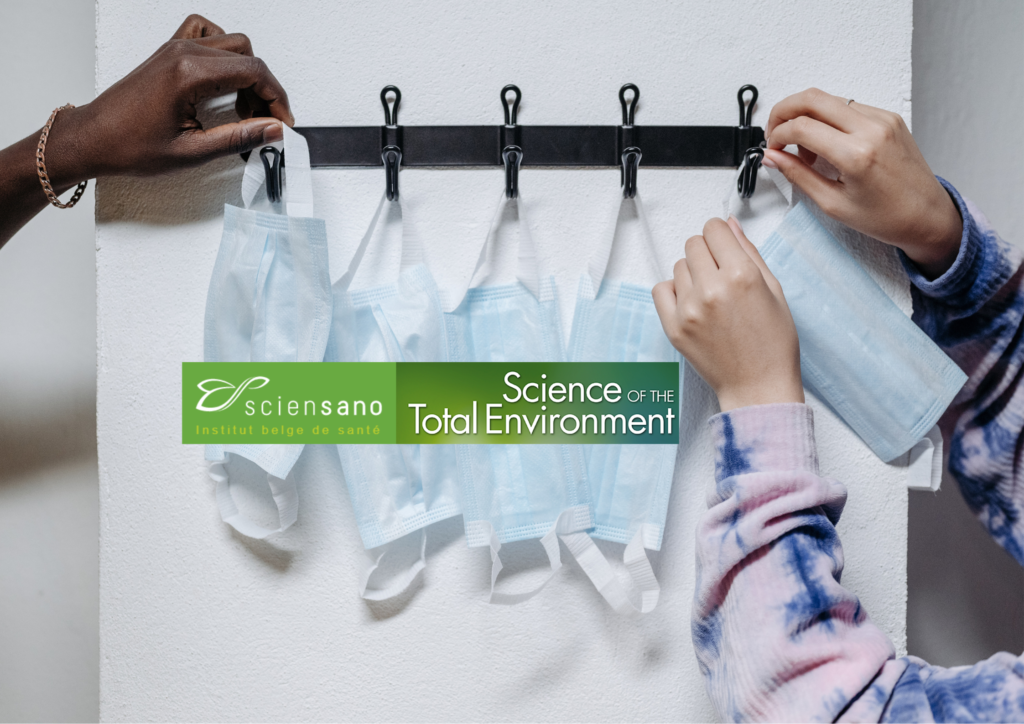
New alert on the use of silver nanoparticles in masks
Sciensano Research Institute calls for limiting the use of silver nanoparticles in masks.
In early February 2023, researchers from the Belgian research institute Sciensano published analyses of a research project initiated in 2020 on silver particles in masks in the journal Science of the Total Environment.
They call for a better control of the application of biocides on masks and for intensifying research related to potential health and environmental risks, joining the same recommendations already made by various organizations including AVICENN. These analyses were the subject of a Sciensano report published in 2022 and are available here.
The AgMask project
In response to the increasing commercialization of masks coated with a virucidal treatment, Sciensano had launched the AgMask project in 2020 to evaluate the types, efficacy and health risks of silver-based biocides used in masks.
Initial results had already been published in 2021, reporting the use of titanium dioxide and silver nanoparticles in Avrox masks.
In a second step, Sciensano analyzed twenty consumer masks: silver was detected in thirteen masks (in ionic, metallic form and in four masks, in nanoparticulate form). By comparing the silver content of the masks to the inhalation exposure limits already established by the U.S. National Institute for Occupational Safety and Health (NIOSH), the researchers distinguished two groups of masks.
- on one side, 7 masks that can be considered as “safe-by-design”,
- on the other, 6 masks exceeding the exposure limit values and for which a more thorough risk assessment is necessary; one of them was even withdrawn from the market by the Belgian authorities because it contained a much too high silver content.
The benefit-risk balance in question
Why is silver used by mask manufacturers? This substance has antimicrobial properties that limit the transmission of bacteria, can facilitate the conservation of fabrics and limit bad odors. All properties that brands do not hesitate to use as a selling point.
However, exposure to silver ions and silver nanoparticles can have harmful effects: presumed risks of serious effects on the nervous system (neurotoxicity following repeated or prolonged exposure), risks for fertility and dangers for the aquatic environment. Silver is therefore in the process of being classified at the European level.
Today, nanosilver is no longer authorized in Europe as a biocide in masks
Nano silver can no longer be used as a biocidal substance since 2021 for product types 2, 4 and 9 following a decision of the European Commission. However, researchers point out that the anti-viral activity of silver nanoparticles remains a selling point…
Sciensano advocates for better nanosilver regulation
As noted by the Sciensano researchers, their results argue for further research into the applications of silver-based biocides in masks and the applications of nanotechnology in masks in general. Regulations must be commensurate with potential health and environmental risks of these biocidal coatings, already widely marketed in the medical field as well as to the general public – as shown in France by the tests carried out on sports textiles by the DGCCRF and on a toothbrush for children by AVICENN.
Concerns already raised by ANSES, AVICENN and twelve European NGOs
ANSES in 2020 and AVICENN with twelve other European NGOs in 2021 had underlined that the regulation of articles treated with nano/biocides is lagging behind the marketing of new products and does not guarantee their safety.
In January 2021, these NGOs had published an open letter addressed to the European Chemicals Agency (ECHA) asking for a clarification of the regulatory framework and more information on the monitoring of anti-covid-19 nano products. ECHA’s response had been to put the onus back on the Member States, those being responsible for monitoring the correct application of the Biocides Regulation.
The Sciensano study shows how urgent it is to act; the Member States can no longer close their eyes and must make the precautionary principle prevail, as advocated by associations, health authorities and by the scientific community.
Limited risk assessment… but for how long?
Sciensano researchers remain cautious about the results, as it is difficult today to measure the release of silver particles from the mask to the user and to have an accurate idea of the level of exposure by inhalation.
The “Renaame” project, a project involving Sciensano in Belgium, the Laboratoire National de Métrologie et d’Essais (LNE) and the Institut National de Recherche et de Sécurité (INRS) in France, has just been launched to develop a validated test methodology for the evaluation of the potential aerosol phase release of nanomaterials (titanium dioxide, silver, copper, magnesium oxide) by masks with or without treatment claims. This project has been selected by ANSES within the framework of its call for environment-health-work research projects and has received €200,000 in funding from the Ministries of the Environment, Agriculture and Labor.
To be continued…

Our information sheets to go further
Other news on the topic
Upcoming Nano Agenda

- Webconference for analysis laboratories, plant fertilizer manufacturers and distributors, public authorities…
- Moderated by David Krupka, nanotechnologies development manager at AFNOR Normalisation and Emilie Langlois-Bertrand, nantechnologies standardization project manager.
- In partnership with Armand Masion, CNRS Research Director, and Sandrine Mocoeur, Health, Safety, Environment and Quality Manager at SYNGENTA.
- This exchange will also be an opportunity to explore the creation of a national platform to identify standardization needs.
- Website: www.afnor.org/evenement/nanotechnologies-agriculture-cadre-pratique-responsable/
- 8th Congress of Occupational Medicine and Health (CNMST 2026)
- Theme 5: Emerging pathologies and risks, Mr Henri Bastos (ANSES), Pr Lynda Bensefa-Colas (AP-HP), Dr Catherine Nisse (CHU Lille)
- Website: www.medecine-sante-travail.com
- 20th meeting of the “nano and health” dialogue committee
- Organizer: ANSES



